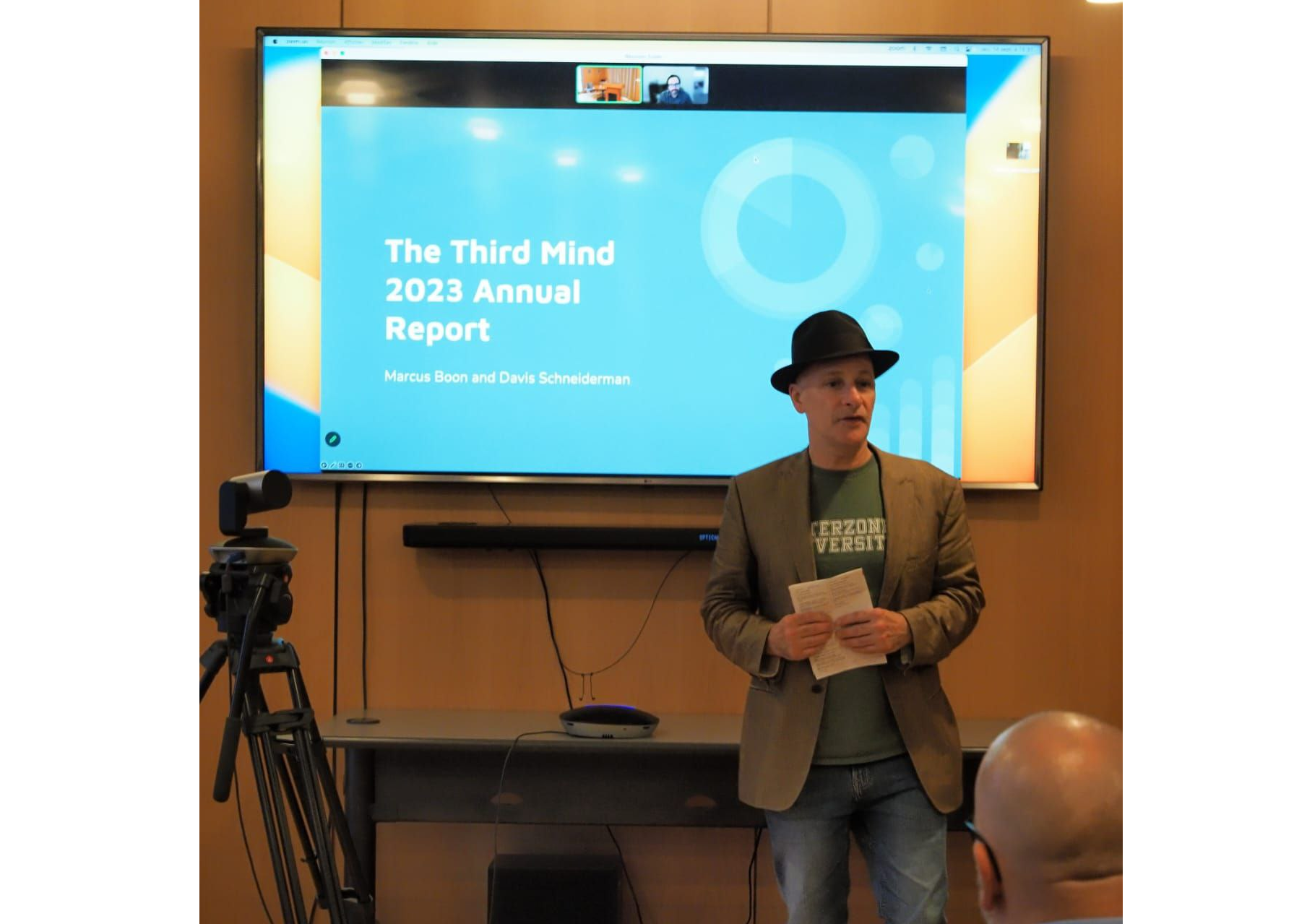
I am extremely interested in attending the Tehran International Book Fair/The legendary character of Hassan Sabah and the need for a greater understanding of Iranian culture
1403/02/20-17:13
1. In September of last year, a joint book by you and Farid Ghadami about the portrayal of Hassan Sabbah in the works of William Burroughs was published in English by Moloko print in Germany. I know that this book was well received and the first edition was sold at the very beginning. Can you explain about this book and your shared experience with Farid Ghadami in writing this book?
As a Burroughs scholar, I have always tried to do original research to understand his work and its sources. As a British scholar, that has mainly meant researching American culture but also the cultures of other lands he lived in, from Mexico to Morocco. I never tried to be his biographer, because I found his life fascinating but also so remote from my own experience. As soon as I met him for the first time, in Kansas 40 years ago, I knew I would never really understand him. So I have focused on the life of his work, not the life of the man.
From the start of my interest in Burroughs back in the 1980s, I knew the importance of Hassan Sabbah to him, but Hassan Sabbah was a figure from the remote past and from a culture and history about which I knew next to nothing. I was interested in Burroughs’ fictional Hassan Sabbah, and didn’t try to discover more about him as an historical figure. Language was one obvious barrier, and my knowledge of Persian literature and history and religion was (and remains) minimal.
For the books I was editing in 2020, especially BATTLE INSTRUCTIONS, I researched Burroughs’ obsession with Hassan Sabbah extensively, but only within the limits I’ve described: focused on Burroughs’ texts. I would never have ventured to research and write an entire book about Hassan Sabbah had Farid not got in touch with me and piqued my interest. He also reminded me of how limited my knowledge really was. Of course, when we began to write our book, I didn’t try to become a scholar of Persian history or Ismaili religion: I left that to Farid. But working together helped me find the real story in Hassan Sabbah and show me what had been hidden in plain sight: if Hassan Sabbah was remote from my experience, he was equally remote from Burroughs. Why did this 20th-century American writer become so obsessed with him? I began to see that this book would be a story about my life following in Burroughs’ footsteps, because his obsession with Hassan Sabbah paralleled my own obsession with William Burroughs. We were both fascinated by people remote from us we knew we couldn’t understand. Of course, we responded in very different ways. Burroughs responded imaginatively, creating his own version of Hassan Sabbah, as a kind of radical fantasy figure. I responded to Burroughs more academically, by trying to reveal the facts behind the myths—because Burroughs has been almost as much a mythical figure as Hassan Sabbah. And what made Two Assassins such a success, I think, is that Farid and I both found our own personal stories interwoven in telling the stories of William Burroughs and Hassan Sabbah.
2. The literature of Beat Generation is very popular in Iran, and today Iranian readers have been familiar with the works of them through the translations of Farid Ghadami. Including the book Naked Lunch which was published in Persian with your introduction, it is still in the list of popular books among Iranians. What do you think it is about Beat Generation literature that continues to appeal to today's audiences?
The popularity of the Beat Generation seems at first sight easy to explain: they were unique as a group of writers who openly rebelled against conforming to the dominant social as well as literary values of their day and, in so doing, inspired both their readers and also other artists, musicians, filmmakers, and creative people. Because those dominant values were—to use a shorthand—the “American Dream,” the Beats offered a critique from within the system that had very wide appeal. However, part of that appeal was very quickly “Americanised,” turned into a series of seductive images of rebellion that didn’t threaten the capitalist system, because, as we know, capitalism thrives on change and turns dissent into fashion, politics into a t-shirt.
So while I think an interest in the Beat Generation usually goes together with an open-minded interest in culture as an agent for resistance to oppressive orthodoxies, I’m more skeptical about how radical it always is. One reason for my skepticism is that there are so many different elements to the Beat Generation, so many varities. Kerouac, for example, has been the most popular because his vision is the most romantic, the least threatening. Burroughs has always been the most challenging to read, the most dangerous. His work has more sophistication but also greater ferocity. Ginsberg’s optimistic spiritualism is different again. One thing I love about the European Beat Studies Network, which I’ve helped run for the past decade, is that it brings together people who value different aspects of the Beat Generation yet all have something in common. The general appeal of the Beat Generation is, I think, to do with rather shallow seductive images; but these images usually are gateways to deeper, more particular interests, and a sense of community.
As for the interest from Iranians, this has been a huge surprise to me, to realise how popular the Beats are. That perhaps is just my ignorance—like most Westerners, I know Iran mainly from media stereotypes in news reports—but I imagine there is a response not only to images of rebellion or even individual books, but also to the “scene” that the Beats created—that is, to an environment of poets and artists meeting each other in cafes, feeling the excitement of trying to create something larger than whatever you can do alone sitting at a computer screen or in a studio, a creative community, an alternative society.
3. Every year in May, an international book fair is held in Tehran, Iran. Do you think you will be able to come to Iran one day to sign the English versions and possibly the Persian translation of this book for the Iranian audience?
I would love to come to Iran one day! It’s frustrating that this day may not come soon, but keep the invitation open please because, yes, I will be coming!
4. Do you think that communication between writers and people of different countries can have an impact on promoting peace and tolerance among nations in the world?
Yes, absolutely. Of course, there is always the issue of translation, of what gets lost and gained in, for example, the texts of the Beats that Farid has translated into Farsi. I know from my reading of how Burroughs has been translated into French—the only other language I can claim to understand—just how difficult Burroughs is to translate. His works are difficult enough for most Anglophone readers! So it’s inevitable that a translator can communicate some aspects of form and content but not all of them. For example, the “translation” of Naked Lunch from text into film by David Cronenberg—which I think is well-known in Iran—succeeds on some levels, but completely misses the wild and dangerous humour of Burroughs’ novel (which is the reason I dislike the film so much, even though I usually like Cronenberg’s films).
I’m not sure, however, whether Burroughs would subscribe to the goal of “promoting peace.” As a good liberal, I want that to be everyone’s goal, of course. But one reason I am drawn to Burroughs is his skepticism, his cynicism, his honesty. He doesn’t make you complacent or let you delude yourself into feeling optimistic. He challenges you to be realistic. And his view is not reassuring. In Cities of the Red Night, he writes bluntly about the world’s insoluble problems, which have accelerated since the Industrial Revolution, and about whether freedom from tyranny is possible: “Only a miracle or a disaster could restore it.”
5. William Burroughs would have loved to have a trip to Alamut, but unfortunately he could not. Which parts of Iran would you like to travel to? In the book Two Assassins you mentioned your Shirazi carpet and Khayyam’s book of poems, would you like to travel to Neishabur and Shiraz?
I would enjoy traveling anywhere! The Alamut region, of course, and, because I have always lived with Shiraz rugs, it would be a special pleasure to go there.
6. In addition to having a joint book with an Iranian author, many Iranians today know you as the editor and most important autotity of Burroughs' works, and many have read the small book Danger Sign: William Burroughs in Paris which was published in Persian. Is there something you want to talk to the Iranians about and I haven't asked about it?
To be honest, I think I must become more informed about Iran and especially Persian culture, so that we can have a better dialogue. That would help me to explain the work I’ve done and understand from you how it sounds to your ears. All I would say now is that I admire the fierce independence of mind and soul and the strong loyalty I have witnessed in Farid. If this is characteristic of Iranians, then I want all the more to visit your country!



 بازگشت
بازگشت

